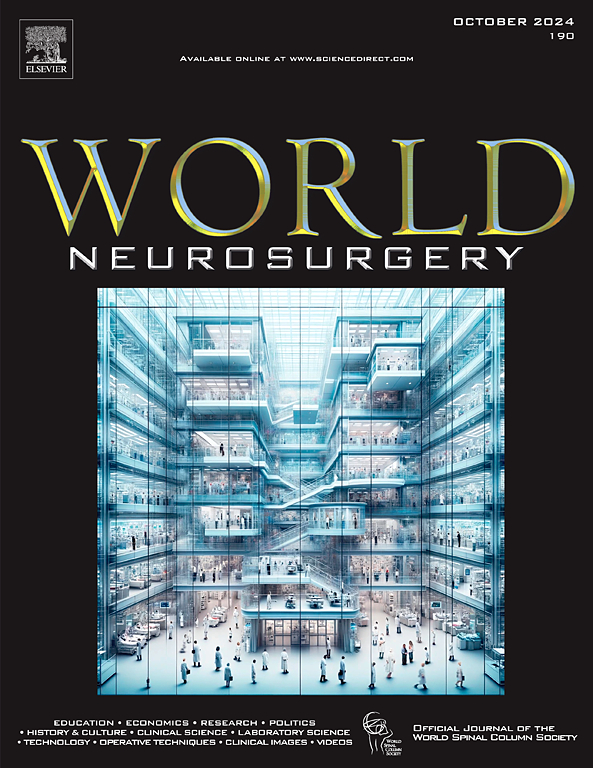Brain Tissue Oxygen Combined with Intracranial Pressure Monitoring in Patients with Severe Traumatic Brain Injury: An Updated Systematic Review and Pooled Analysis Following the OXY-TC Trial
IF 1.9
4区 医学
Q3 CLINICAL NEUROLOGY
引用次数: 0
Abstract
Background
Severe traumatic brain injury (TBI) is associated with high mortality and long-term disability. Effective TBI management, aimed at minimizing secondary brain damage, requires constant monitoring of intracranial pressure (ICP) with or without brain tissue oxygen pressure (PbtO2). The recent OXY-TC trial suggested that combined ICP + PbtO2 monitoring does not improve the 6-month neurological outcomes, prompting a meta-analysis to reassess the clinical role of PbtO2 monitoring.
Methods
We conducted a systematic review and meta-analysis by searching the PubMed, Medline, and Cochrane databases for randomized controlled trials and prospective studies on adult severe TBI patients, comparing clinical outcomes of ICP monitoring alone versus ICP + PbtO2 monitoring. Data extraction and quality assessments were performed independently by two reviewers. Meta-analyses were conducted using a random-effects model, focusing on 6-month mortality and favorable functional outcomes.
Results
Six studies met the inclusion criteria. The ICP + PbtO2 group is more likely to have favorable outcomes (odds ratio: 1.39, 95% confidence interval: 1.01–1.92, I2 = 0%) 6 months following TBI. There were no statistically significant differences in the 6-month mortality (odds ratio: 0.75, 95% confidence interval: 0.52–1.10; I2 = 0%).
Conclusions
Our research findings partially align with the OXY-TC trial regarding the primary endpoint, demonstrating that brain tissue oxygen-guided therapy does not significantly reduce mortality rates in TBI patients 6 months postinjury. However, in contrast to the OXY-TC trial, we observed that the PbtO2 monitoring group showed a significantly higher proportion of favorable outcomes.
脑组织氧联合颅内压监测在严重外伤性脑损伤患者中的应用:OXY-TC试验后的最新系统综述和荟萃分析
重度创伤性脑损伤(TBI)具有高死亡率和长期残疾。有效的TBI治疗,旨在减少继发性脑损伤,需要持续监测颅内压(ICP),有无脑组织氧压(PbtO2)。最近的OXY-TC试验表明,联合ICP + PbtO2监测并不能改善6个月的神经预后,促使荟萃分析重新评估PbtO2监测的临床作用。方法:通过检索PubMed、Medline和Cochrane数据库,对成人重型颅脑损伤患者的随机对照试验和前瞻性研究进行系统回顾和荟萃分析,比较单纯ICP监测与ICP + PbtO2监测的临床结果。数据提取和质量评估由两名审稿人独立进行。采用随机效应模型进行meta分析,重点关注6个月死亡率和良好的功能预后。结果:6项研究符合纳入标准。颅脑损伤后6个月,ICP + PbtO2组更有可能获得良好的预后(OR: 1.39, 95% CI: 1.01-1.92, I2 = 0%)。6个月死亡率差异无统计学意义(优势比OR: 0.75, 95%可信区间CI: 0.52-1.10;I2 = 0%)。结论:我们的研究结果与OXY-TC试验的主要终点部分一致,表明脑组织氧引导治疗并不能显著降低损伤后6个月TBI患者的死亡率。然而,与OXY-TC试验相比,我们观察到PbtO2监测组显示出明显更高比例的有利结果。
本文章由计算机程序翻译,如有差异,请以英文原文为准。
求助全文
约1分钟内获得全文
求助全文
来源期刊

World neurosurgery
CLINICAL NEUROLOGY-SURGERY
CiteScore
3.90
自引率
15.00%
发文量
1765
审稿时长
47 days
期刊介绍:
World Neurosurgery has an open access mirror journal World Neurosurgery: X, sharing the same aims and scope, editorial team, submission system and rigorous peer review.
The journal''s mission is to:
-To provide a first-class international forum and a 2-way conduit for dialogue that is relevant to neurosurgeons and providers who care for neurosurgery patients. The categories of the exchanged information include clinical and basic science, as well as global information that provide social, political, educational, economic, cultural or societal insights and knowledge that are of significance and relevance to worldwide neurosurgery patient care.
-To act as a primary intellectual catalyst for the stimulation of creativity, the creation of new knowledge, and the enhancement of quality neurosurgical care worldwide.
-To provide a forum for communication that enriches the lives of all neurosurgeons and their colleagues; and, in so doing, enriches the lives of their patients.
Topics to be addressed in World Neurosurgery include: EDUCATION, ECONOMICS, RESEARCH, POLITICS, HISTORY, CULTURE, CLINICAL SCIENCE, LABORATORY SCIENCE, TECHNOLOGY, OPERATIVE TECHNIQUES, CLINICAL IMAGES, VIDEOS
 求助内容:
求助内容: 应助结果提醒方式:
应助结果提醒方式:


